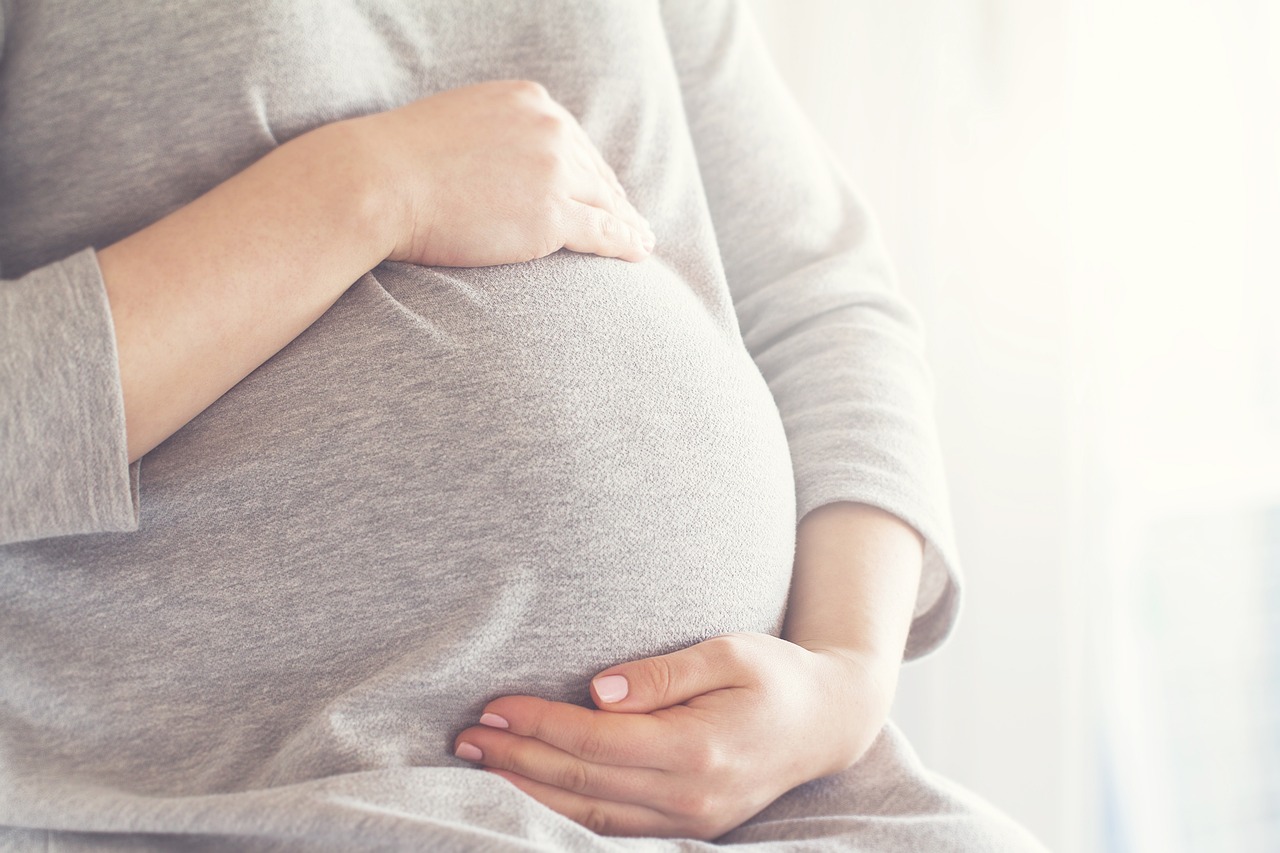As you enter the final phase of your pregnancy, you may encounter terms like ‘baby-dropping’ or ‘lightening.’ Don’t worry; these terms don’t involve babies falling from the sky. They refer to the gradual descent of your baby into your pelvis, a significant step as you near labor. It’s completely normal to feel a mix of excitement and nervousness at this stage. Understanding the signs of ‘lightening’ in pregnancy can help you prepare physically and emotionally for this imminent change. So, when does the baby drop, and what does it feel like? Let’s explore the details as the experts share them.
What Is Lightening in Pregnancy?
Pregnancy lightening happens when the baby starts moving lower into the pelvis toward the end of the third trimester to prepare for birth. It makes Mom feel lighter in the upper abdomen because there’s less pressure on the ribs and diaphragm, making breathing easier. It’s called lightening because of this feeling of weight reduction. It is a sign that the baby will likely arrive soon.
When Does Baby Drop?
The process of baby dropping typically happens later in the third trimester, nearing delivery time, but there’s no specific week when it occurs universally. When the baby drops, experts suggest that lightening, which indicates the start of labor, can occur anywhere from a few weeks to a few hours before labor begins. The timing varies from person to person, highlighting the uniqueness of each pregnancy journey. Expectant mothers need to be mindful of the signs and changes in their bodies as they approach the end of their pregnancy.
Signs of Baby Dropping
Here are some signs that indicate baby dropping, according to our expert:
- Widened hips
- Increased discharge, which might signal the loss of the mucus plug
- Lower belly button position
- Changes in walking, such as a waddled gait
- Relief from heartburn
- More frequent urination
- Increased pelvic pressure
- Lower back or sciatica pain
- Easier breathing
- A potential decrease in belly size at your next doctor’s visit
Remember, every pregnancy is unique so you may experience some, all, or none of these signs.
What Does It Look Like When the Baby Drops?
When the baby drops, your bump might look lower than usual, which is often noticeable when you stand sideways. You might feel less pressure on your ribs and diaphragm, making breathing easier. You may also experience increased pelvic pressure and more frequent urination due to the baby’s lower position. Other signs can include a change in your walking pattern, often resulting in a waddle and potential relief from heartburn. Additionally, you might notice more pressure in your pelvis and even some lower back or sciatica pain. While you might not notice these changes, a friend or loved one might immediately see the difference.
What Does It Feel Like When the Baby Drops?
The physical sensations of lightening are usually more noticeable than the visual signs. You may find breathing more straightforward as the baby drops lower in the pelvis, reducing pressure on your diaphragm and lungs. You can also eat more comfortably than earlier in the third trimester. While you’ll feel lighter at the top, you may notice a heaviness in your pelvic region as the baby prepares for labor. Frequent trips to the bathroom to pee can also signify that the baby has moved lower.
Toward the end of pregnancy, many noticeable changes occur in your body. If you haven’t experienced any signs of dropping yet, don’t worry. Keep paying attention to your body and stay in touch with your provider. Soon enough, the baby will be nestled into your pelvis, ready for birth.
Timing of Labor Following Baby Dropping
If you’re hoping for a definitive sign that labor is imminent, lightening isn’t it. It’s a common misconception that baby dropping means labor will start right away. Lightening doesn’t necessarily indicate that labor is imminent; it could mean hours, days, or weeks until labor begins.
Interestingly, if this is your second pregnancy or beyond, the timing of lightening might differ from your first pregnancy. For women who have given birth before, lightening may not occur until later in the pregnancy—sometimes just days before labor starts or during actual labor. Medical experts think this happens because the pelvic floor muscles have already stretched from a previous pregnancy and birth, so they don’t need as much time to prepare for labor.
How to Get the Baby to Drop
If you’re having a healthy pregnancy and are at least 36 weeks along, it’s generally safe to start encouraging the lightening process. If you don’t plan on having a vaginal delivery or if you’re considered high-risk, trying to get the baby to drop early could lead to complications.
Before trying to encourage lightening, consult your provider to ensure you and your baby are ready. If you get the green light, here are a few ways to promote baby-dropping:
- Widened deep squats: These stretches help open the top part of the pelvis. Do them daily, holding each squat for up to 10 seconds. Stretch well before squatting.
- Yoga ball rocking: Gently rock your hips from front to back and in circles using a yoga ball to help open the top part of the pelvis. Ensure your knees are below your hips and your legs are slightly angled out.
- Abdominal lifts and pelvic tucks: These exercises can comfort overstretched abdominal muscles and help engage the baby’s head into the pelvis. Embrace your belly with both arms at the bottom part, lift it, and tuck your pelvis up towards the sky. This exercise is most accessible against a wall.
- Figure-4 stretch: This hip-opening exercise ensures the pelvic floor muscles are flexible to allow baby engagement. Rest in a chair and cross your right leg over your left thigh. Lean forward over your thighs for a stretch. Repeat with the other leg.
Whether lightening is noticeable or not, the best thing you can do near the end of your pregnancy is to take care of your body and prioritize your health.
Understanding baby dropping or lightening can help you feel more prepared for labor as you approach the end of your pregnancy. Each pregnancy is different, so the signs and timing of baby dropping can vary. Pay attention to your body and stay in touch with your healthcare provider.
If your pregnancy is healthy and your provider approves, you can try exercises to help the baby drop. However, the most important thing is to take care of yourself. Relax, stay informed, and prepare for your baby’s arrival.
At Healthy Start, we support you through every stage of your pregnancy. Knowing about baby dropping and what to expect can help you feel more confident. Your baby will come when the time is right, and soon, you’ll welcome your new addition with joy and love.

